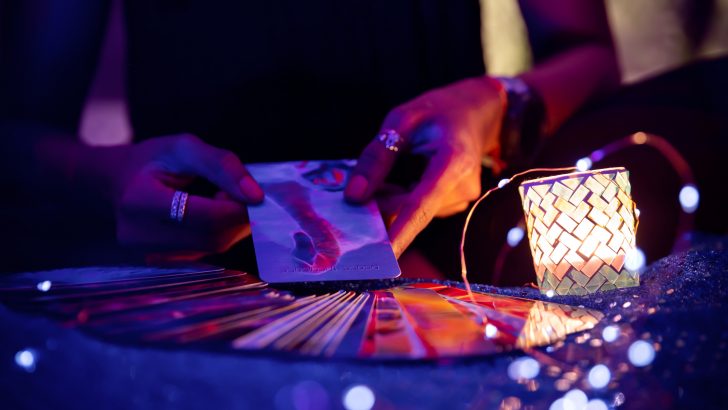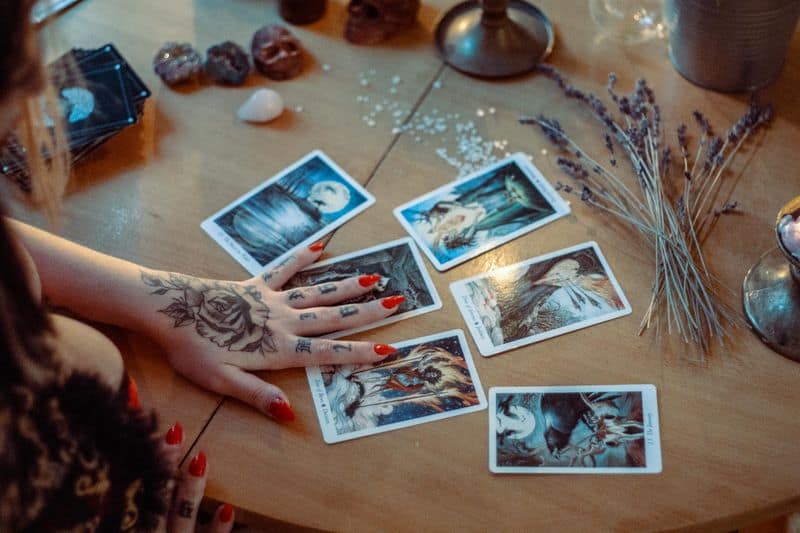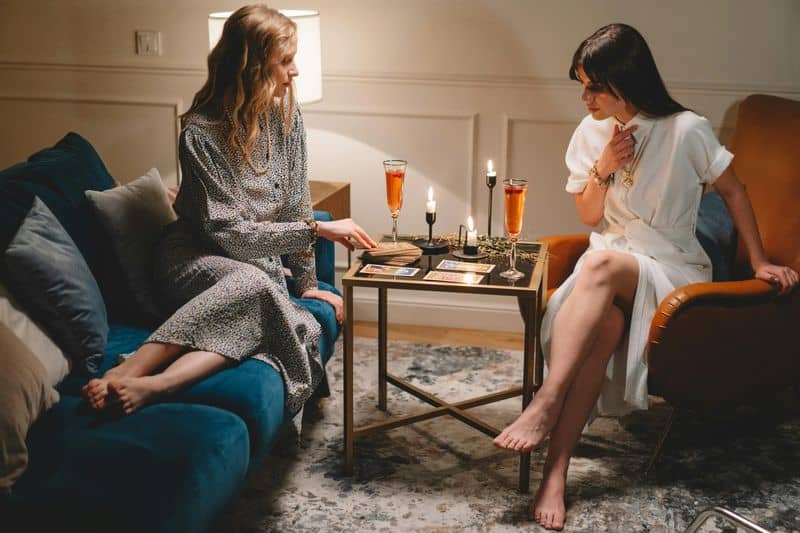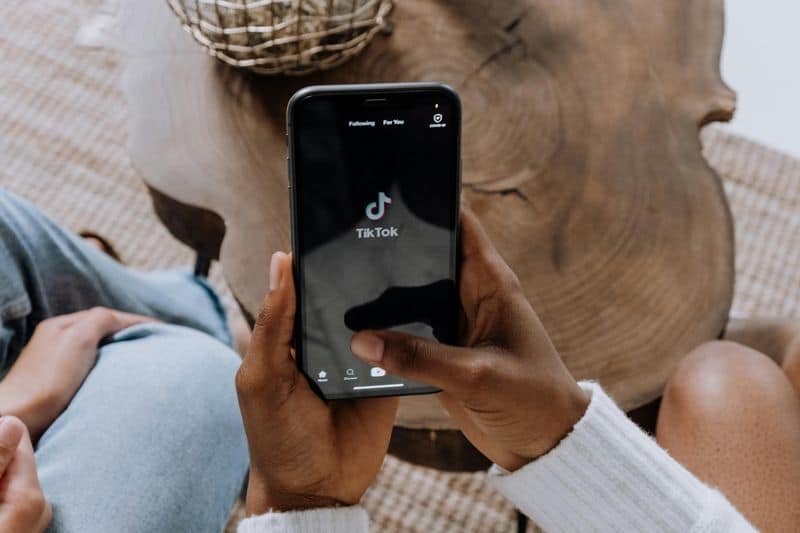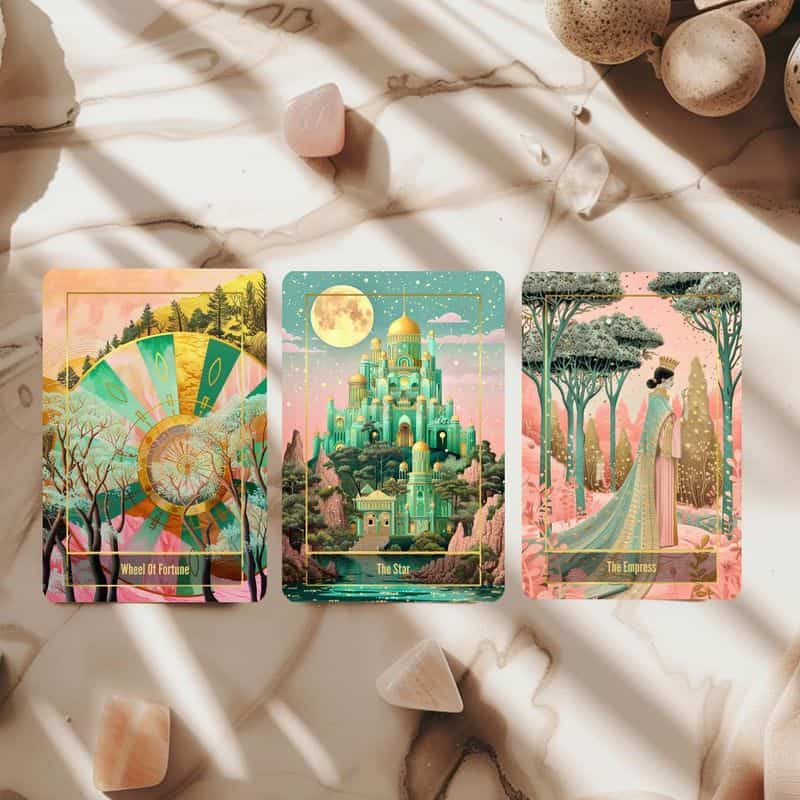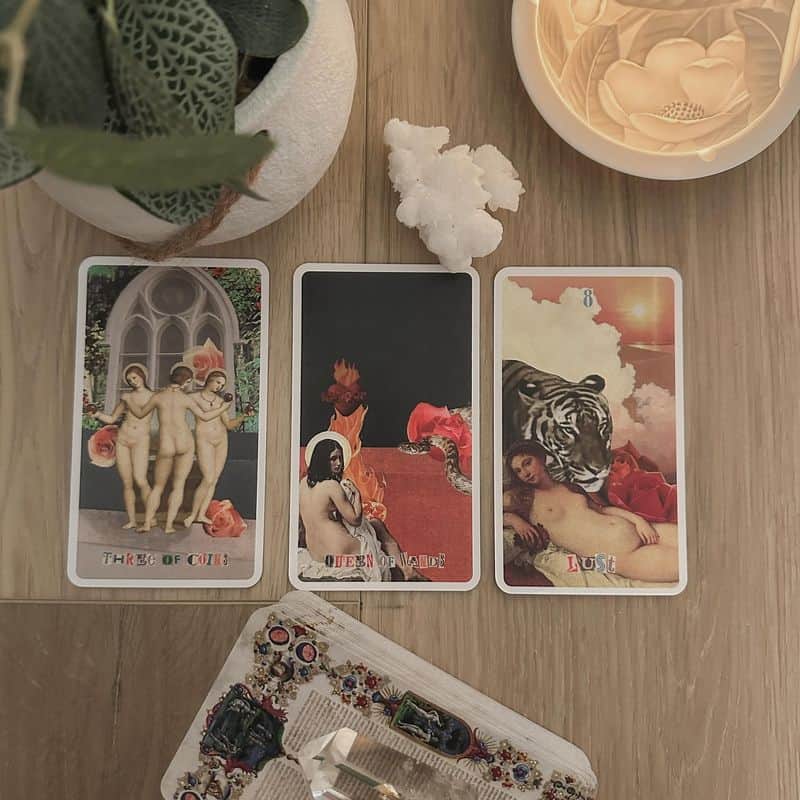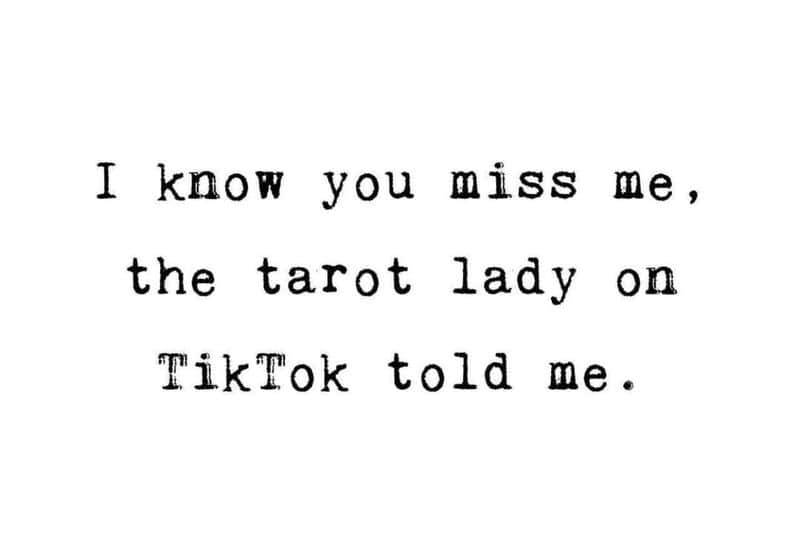TikTok has become the unlikely home for a tarot card renaissance, with #TarotTok videos racking up billions of views.
Young people scrolling through their phones are now pausing to pull cards, seeking guidance from ancient symbols in our ultra-modern world.
This blend of mysticism and social media reveals something deeper about our times – in an age of algorithms and endless content, we’re still searching for meaning, connection, and a little bit of magic.
1. Card Flipping Goes Viral
Remember when viral challenges meant eating cinnamon or dumping ice water? Now it’s all about flipping tarot cards! TikTok creators film themselves dramatically revealing The Lovers or Death cards to millions of viewers.
These quick readings offer bite-sized spiritual guidance perfect for short attention spans. The visual nature of card reveals works perfectly with TikTok’s format – colorful cards, shocked reactions, and dramatic interpretations make for addictive content.
Fun fact: Some TarotTok videos use special effects to make cards appear to glow or levitate, adding extra mystical vibes to their readings!
2. Cosmic Comfort in Chaotic Times
“Your tower moment is coming, but don’t worry – it’s for your highest good.” Messages like these flood TarotTok, offering strange comfort during uncertain times. The pandemic, climate anxiety, and political turmoil have left many feeling adrift.
Tarot’s framework provides structure and meaning when the world feels chaotic. Young people find solace in the cards’ suggestion that difficult experiences are part of a larger pattern or journey.
Unlike traditional religious systems, tarot offers spiritual guidance without rigid dogma – perfect for a generation that values personalized spiritual experiences over institutional belonging.
3. Algorithm-Guided Spirituality
“This card found YOU today!” declares a TikTok tarot reader to millions of viewers simultaneously. Somehow, many feel the message was meant specifically for them – a digital-age miracle or clever psychological trick?
TikTok’s algorithm creates eerie coincidences by delivering tarot readings that seem personally relevant. Users report getting exactly the guidance they needed at precisely the right moment, creating a sense of destiny in the digital realm.
This phenomenon combines ancient divination with cutting-edge technology. The algorithm becomes a modern oracle, connecting users with content that resonates with their subconscious desires and fears.
4. Digital Community Replaces Traditional Spaces
“Comment ‘me’ for a reading!” These five words have spawned thousands of digital tarot communities. Unlike the mysterious fortune teller in a dimly lit room, today’s tarot readers are accessible, relatable creators building genuine connections.
Live readings create shared experiences as viewers witness others receiving guidance. The comments section becomes a support group where strangers comfort each other through breakups, job losses, and life transitions.
This digital accessibility has democratized spiritual practices once limited to those with access to physical practitioners. Now anyone with a phone can join a global tarot community, finding belonging in an increasingly isolated world.
5. Skeptics Meet Believers in Comments Sections
The comments section under tarot videos creates fascinating cultural collisions. “This is exactly what I needed to hear!” sits right above “Y’all know this is fake, right?” – a perfect microcosm of our divided spiritual landscape.
TarotTok has sparked fresh debates about faith, coincidence, and meaning-making. Some approach readings as psychological tools for self-reflection, while others embrace the mystical elements wholeheartedly.
Surprisingly respectful conversations often emerge between skeptics and believers. These digital spaces allow people to explore spiritual questions openly, creating dialogue across worldviews that rarely happens in physical spaces.
6. Spiritual Side Hustles Boom
“Get your personal reading in my Etsy shop!” From college students to corporate escapees, thousands have turned tarot reading into lucrative side hustles thanks to TikTok’s massive reach.
The platform serves as the perfect marketing tool for spiritual entrepreneurs. A viral reading can drive hundreds of customers to paid services, digital guidebooks, or custom merchandise – transforming ancient practices into modern business models.
This commercialization creates tension within spiritual communities. Some practitioners worry about exploitation and shallow interpretations, while others celebrate increased accessibility and the ability to make living from meaningful work.
7. Gen Z Redefines Ancient Traditions
“This isn’t your grandma’s tarot!” Gen Z has reimagined tarot with modern language, diverse representation, and pop culture references. Traditional readers might raise eyebrows at cards interpreted through Taylor Swift lyrics or Marvel characters.
Young creators have freed tarot from stuffy traditions, making it relatable and inclusive. Digital-native adaptations include emoji readings, AI-generated interpretations, and decks featuring diverse bodies and relationships absent from historical imagery.
This evolution mirrors how each generation reinterprets spiritual practices to reflect their values. Today’s digital tarot renaissance honors the tradition’s essence while adapting it for a world where TikTok and tarot coexist as tools for understanding ourselves.

